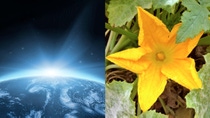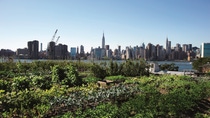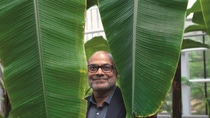Média
Cultivating zucchini in outer space

The exploration of new opportunities in agriculture doesn’t stop at planet Earth. New dimensions in vegetable gardening are even unfolding in outer space.
In July 2012, US astronaut Dr. Donald Pettit raved about his homegrown zucchini in his blog entitled Diary of a Space Zucchini. This idea could help add variety to the astronauts’ monotonous diet. At current rates, it costs about US $10,000 to send a pound of food into space. Therefore, fresh vegetables are a genuine rarity.
Space farming is only about isolated plants at the moment. However, scientists envision a complex artificial ecosystem in a spaceship, on the Moon or on Mars, which could regularly provide fresh food to space travelers. Algae could be used to recycle urine for use as fertilizer, colored LED lights to simulate sunlight and nutrient solutions to enable plant growth. Functioning cycles of this kind would provide a starting point for setting up longer-term or indeed permanent space colonies.
Donald Pettit never got the chance to taste his own zucchini. It was returned to earth deep-frozen and tested for cosmic microbes. Pettit claims he would never have dreamed of eating his prized vegetable, anyway: “It would have felt like cannibalism,” the ISS astronaut joked.


